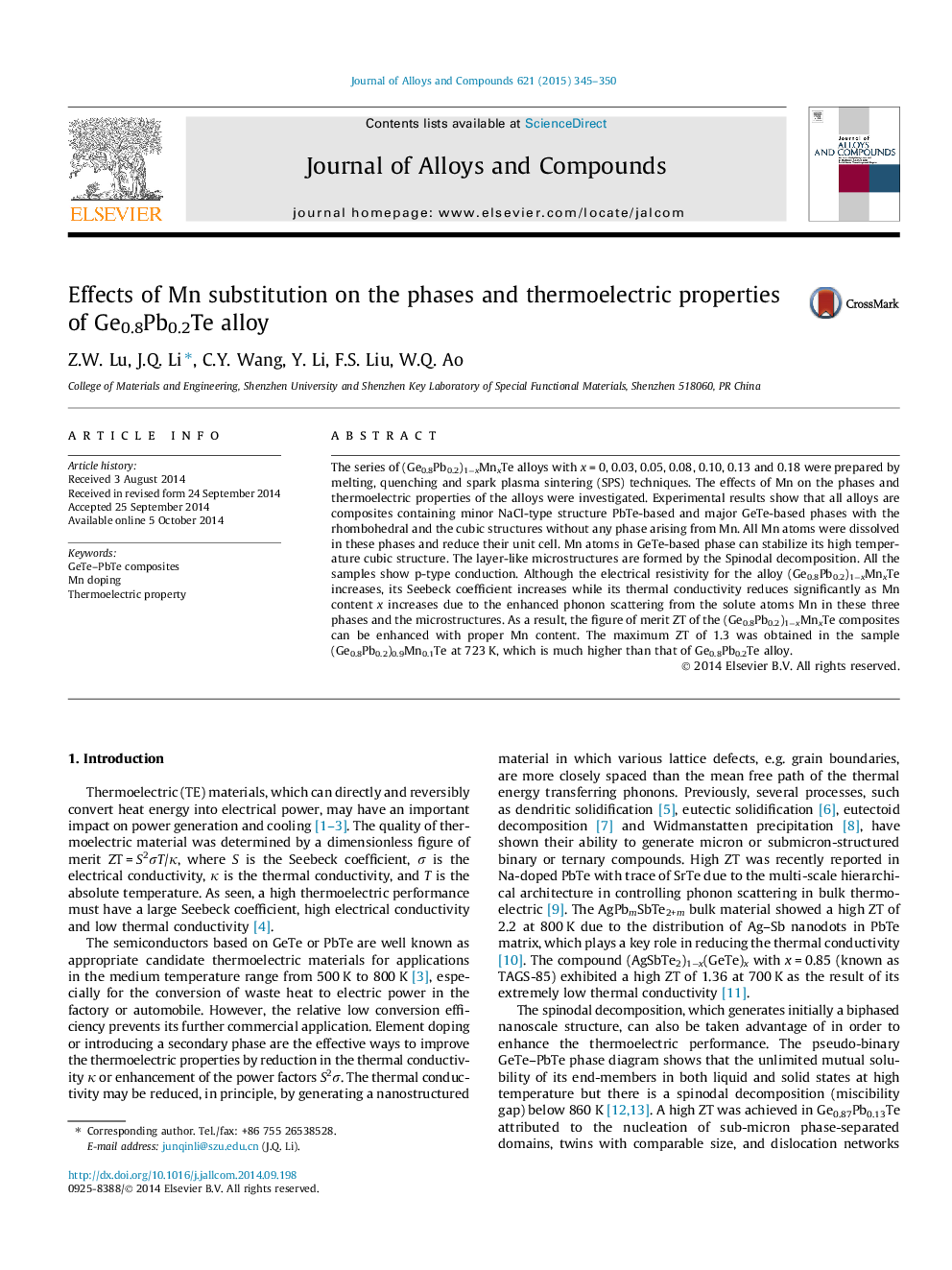| Article ID | Journal | Published Year | Pages | File Type |
|---|---|---|---|---|
| 8000387 | Journal of Alloys and Compounds | 2015 | 6 Pages |
Abstract
The series of (Ge0.8Pb0.2)1âxMnxTe alloys with x = 0, 0.03, 0.05, 0.08, 0.10, 0.13 and 0.18 were prepared by melting, quenching and spark plasma sintering (SPS) techniques. The effects of Mn on the phases and thermoelectric properties of the alloys were investigated. Experimental results show that all alloys are composites containing minor NaCl-type structure PbTe-based and major GeTe-based phases with the rhombohedral and the cubic structures without any phase arising from Mn. All Mn atoms were dissolved in these phases and reduce their unit cell. Mn atoms in GeTe-based phase can stabilize its high temperature cubic structure. The layer-like microstructures are formed by the Spinodal decomposition. All the samples show p-type conduction. Although the electrical resistivity for the alloy (Ge0.8Pb0.2)1âxMnxTe increases, its Seebeck coefficient increases while its thermal conductivity reduces significantly as Mn content x increases due to the enhanced phonon scattering from the solute atoms Mn in these three phases and the microstructures. As a result, the figure of merit ZT of the (Ge0.8Pb0.2)1âxMnxTe composites can be enhanced with proper Mn content. The maximum ZT of 1.3 was obtained in the sample (Ge0.8Pb0.2)0.9Mn0.1Te at 723 K, which is much higher than that of Ge0.8Pb0.2Te alloy.
Keywords
Related Topics
Physical Sciences and Engineering
Materials Science
Metals and Alloys
Authors
Z.W. Lu, J.Q. Li, C.Y. Wang, Y. Li, F.S. Liu, W.Q. Ao,
